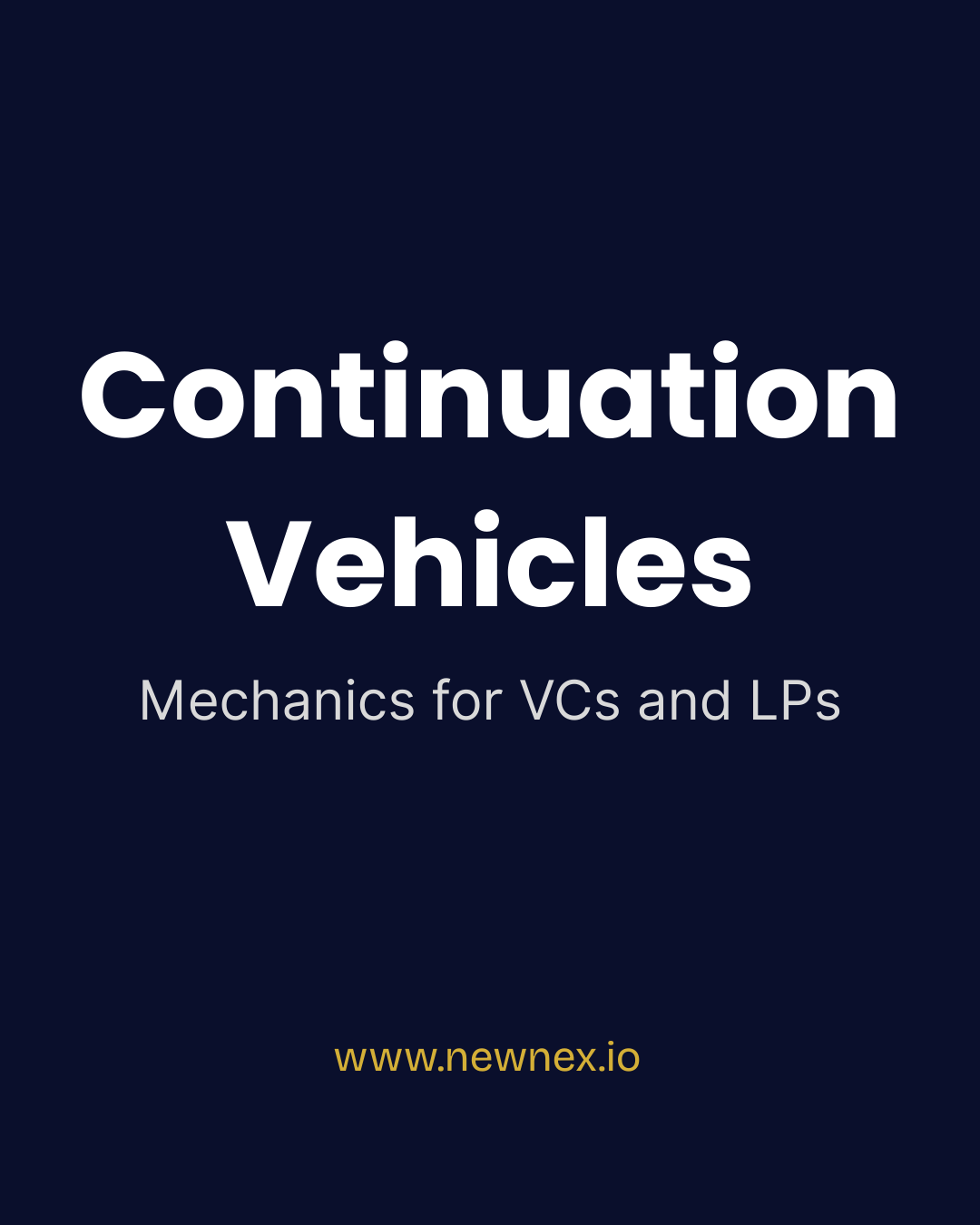Understanding Continuation Vehicles: A Simple Guide to Structure, Setup, and Benefits for VCs

Continuation vehicles are becoming important in today’s private investment world. They allow investment managers to keep holding onto their best-performing assets longer, instead of being forced to sell them when their original fund reaches its end. If you’re new to the concept or just want a clear overview, here’s everything you need to know - from what they are to how they get set up and why they matter.
What Are Continuation Vehicles?
Think of a continuation vehicle as a new investment fund created specifically to take over and hold a company or asset that’s doing well. Usually, VC funds have fixed lifespans - typically 10 years with extensions. However, some assets need more time to reach their full potential. Rather than selling these assets prematurely, managers set up a continuation vehicle so they and investors can keep benefiting from growth.
Imagine you’re a VC firm. Your firm owns some stake in a company, but when your fund’s term ends, you’d normally have to sell. Instead, you start a new fund (the continuation vehicle) that buys the stake from your original fund and raises money from new or existing investors willing to stay for the long haul.
Why Use Continuation Vehicles?
- More Time to Grow: Good companies often need extra years to fully mature and create value.
- Investor Flexibility: Some investors may want to exit, while others may want to roll their stakes forward into the new vehicle.
- Strong Commitment: The managers themselves typically invest their own money too, aligning their success with yours.
Key Features You Should Know
- Fees: Most continuation vehicles today charge a low management fee - usually 1% or less per year on invested capital. This is a shift from higher fees, driven by investor demands for fair pricing.
- Performance Bonuses: Managers earn extra rewards if the asset performs well, with carried interest often rising to 30% after hitting certain return milestones.
- Governance: Investors get protections like approval rights, “key person” clauses that protect against sudden departures, and the ability to remove managers for misconduct.
- Follow-On Capital: Many vehicles put aside extra capital (“dry powder”) to fund additional growth activities, like acquisitions or expansion, rather than just holding the asset passively.
How Are Continuation Vehicles Set Up?
- Selecting the Asset: The GP (general partner or manager) identifies a company or group of companies (assets) that has strong growth potential but may need more time.
- Investor Check: The GP gauges who among existing investors wants to stay in (rollover) or cash out.
- Fair Valuation: An independent review ensures the price for transferring the asset to the new vehicle is fair to all parties.
- Forming the Vehicle: A new fund or company is established with agreed terms on fees, duration (usually five years plus extensions), carried interest, and governance rules.
- Aligning Interests: The GP usually invests their own money or rolls over previous earnings, ensuring they have “skin in the game.”
- Governance Protections: Key person triggers, LP removal rights, and lead investors are put in place for oversight.
- Raising Reserves: Capital is raised not only to buy the asset but also to fund follow-on opportunities.
- Launch and Manage: The continuation vehicle launches, and the GP actively manages and grows the investment while keeping investors informed.
An example:
Picture a venture capital fund backing an UK tech startup. The fund nears its end, but the startup is just hitting profitability and needs more capital and time. Instead of selling, the VC sets up a continuation vehicle, inviting willing investors to roll their stakes or cash out at a fair price. The new vehicle raises extra “dry powder” to fuel further growth. The GP invests personally, management rights and terms are agreed, and the whole group is poised to potentially reap greater rewards over the next five years.
What Should Investors Watch For?
If you’re considering investing via a continuation vehicle, keep these in mind:
- Check that management fees are reasonable, ideally 1% or less.
- Look for tiered carried interest that rewards strong performance.
- Ensure the GP has committed their own capital—this shows confidence and alignment.
- Verify governance features like key person clauses and removal rights.
- Confirm there’s reserve capital available for ongoing growth, not just a holding vehicle.
Continuation vehicles are about giving great investments the time and resources they need to thrive, while offering flexibility to investors and alignment with managers. They bring transparency, discipline, and opportunity to private markets. As this structure gains popularity, especially in fast-growing markets like India, it’s worth understanding how they work and why they’re becoming a standard tool for serious private investors.
Join NEWNEX - the verified VC-LP Network where VCs connect with VCs directly without intermediaries https://newnex.io
0
Comments